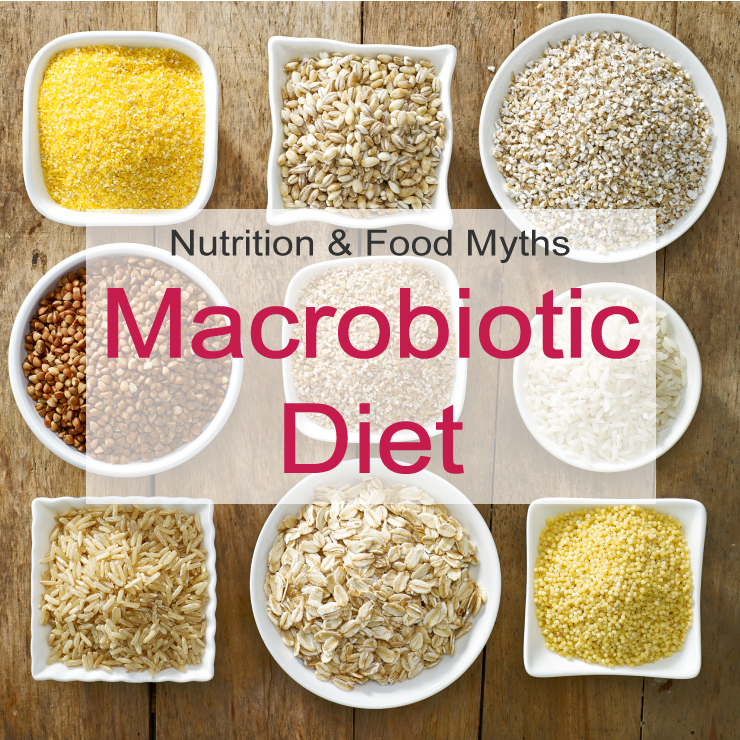 There are so many diet trends promoted for fighting off cancer. But do they work? And are they safe for
cancer survivors on treatment and after treatment?
There are so many diet trends promoted for fighting off cancer. But do they work? And are they safe for
cancer survivors on treatment and after treatment?
So far we’ve talked about the pros and cons of
juicing, the
acid-alkaline diet, and a
gluten-free diet. Today, let’s put the macrobiotic diet to the test!
What is it?
“Macrobiotic” literally translates to “long life”. The macrobiotic diet is part of a larger spiritual program based on some teachings of Zen Buddhism. It is supposed to help you live in balance and harmony and increase your
spirituality through diet.
The macrobiotic diet consists of mostly whole grains (50 to 60% of each meal) some vegetables (20 to 30% of each meal) with a small portion of beans (10% of each meal). This diet cuts out foods that come from animals, with the exception of small amounts of fish. The diet has different levels, each more extreme and limited than the last. The “highest” level of the macrobiotic diet is only brown rice and water, a diet that is not healthy or balanced for anyone, but especially not for cancer survivors.
The good
- The macrobiotic diet is a low-fat, high-fibre diet that is mostly vegetarian and emphasizes whole grains and vegetables. These are all parts of a healthy diet recommended for cancer prevention and cancer survivorship.
- The diet is rich in phytoestrogens from soy products. Phytoestrogens are plant-based hormones that may help reduce cancer risk when part of a healthy diet.
- Overall, the macrobiotic diet emphasizes whole foods while limiting processed foods. This is a good philosophy to follow for overall health because it helps limit salt, sugar, trans fats and artificial flavours and colours.
- Macrobiotic eating encourages using local produce and eating foods that are in season. This is a core belief in the
ELLICSR Kitchen. We use seasonal, local foods whenever possible to support local farmers, the environment and to get the freshest, most nutritious ingredients for our recipes.
The not-so-good
- The macrobiotic diet limits the variety of foods that people eat which means this diet can lack important nutrients. For example, the two staples of the diet, brown rice and soy, are high in phytates, compounds that can prevent the absorption of minerals. Phytates are not a concern when brown rice and soy are consumed with a variety of other foods as part of a balanced diet, but they could affect mineral absorption when eaten as the main part of every meal.
- To get enough vegetables and fruit to prevent cancer, for cancer survivorship, and for overall health, 50% (half) of your plate at each meal should be vegetables and fruit. The macrobiotic diet is only 20 to 30% vegetables and limits fruit to a few servings a week or less. This will make it difficult to get 10 servings of vegetables and fruit each day. This diet is high in grains and low in protein. A healthy plate should be 25% whole grains and 25% lean protein such as skinless chicken or turkey breast, fish, eggs or vegetarian sources such as beans or lentils. The macrobiotic diet recommends having 50 to 60% of each meal as grains and 10% as beans. This may not be enough protein for most people, especially when going through or healing from cancer treatments.
- Limiting protein-rich foods means this diet may also lack vitamin B12 and iron. These nutrients are needed for healthy red blood cells and B12 and iron deficiencies lead to anemia.
- Not only does the diet limit fruit, it also limits other healthy foods such as fish, nuts and seeds to a few times a week or less. There is no scientific evidence to support limiting these foods in the diet for health. In fact, limiting these foods will remove healthy sources of calories and nutrients that cancer survivors need, such as anti-inflammatory omega-3 fatty acids.
- The lack of milk products or fortified milk alternatives in the macrobiotic diet can make it difficult to get enough calcium. Calcium is needed for healthy bones and teeth and muscle and nerve function.
The bottom line
- The macrobiotic diet is not a balanced diet and so should not be followed over the long-term. Take the positive aspects of the macrobiotic diet, such as using whole grains and
local foods, having vegetarian meals more often, and limiting processed foods – but be sure to add more variety, larger servings of vegetables and fruit, and include protein sources at each meal to make your diet balanced and healthy.
- Try our recipe for
Braised Lentils with Pumpkin and Fennel for a vegetarian meal that will take you beyond brown rice and soy.
Is there a diet or other nutrition trend you want investigated? Tweet me
@80twentyrule or email me at
Christy@ELLICSRkitchen.ca.
